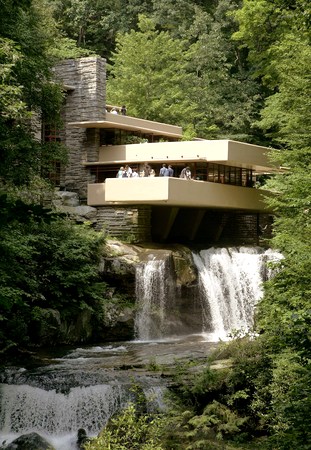This period spanned from 1945 to 1970, and was dominated by American innovation, and inspired by the European avant guard movement. During this post-war period, German and Russian artists moved to America, which was at the time the cultural centre of the world. Early modern styles of design evolved into promoting the capitalist government of the USA, and the dogma of early modernism was discarded. Most designs followed the principle of function before form. function of the design was the main objective for designers of this period. For example, Frank Lloyd Wright constructed buildings which fir into the landscape, he was all for the merging of natural and man made styles. Wright said that designers can have their own style, instead of simply following the trends, but he still put function first.
Late modernism was a combination of function and simplicity, designs revolved around simple aesthetic elegance. In essence it was a merging of
organic shapes and simple geometry. However, the Italian designers of this era always took things two steps too far in regards to outrageous designs. This was due to their history in fine art.
Art and design cross-fertilise each other. As Paul Rand said, "To design is to add value and meaning...To design is to transform prose into poetry."
In terms of posters of this era, typography and illustrations were generally simple, there was a fusion of image and typography,overlapping shapes, and designers were developing their own styles, within the set norms of design at the time.

SWISS INTERNATIONAL
This design movement coincided with late modernism, starting in 1945, and ending in 1985. This was an international style, which was very austere and simple. The success of this movement was hinged on the adherence to the grid, the grid is god in the swiss international movement. The grid aligns the pieces of work, and everything must fit into the grid. All designs are extremely clean, uniform, scientific, and socially useful. It was extreme abstraction based on pure geometry. All of the typography was minimal, and unity was achieved in designs by repetition of shapes. Many pictograms e use today emerged out of this period of design.

No comments:
Post a Comment